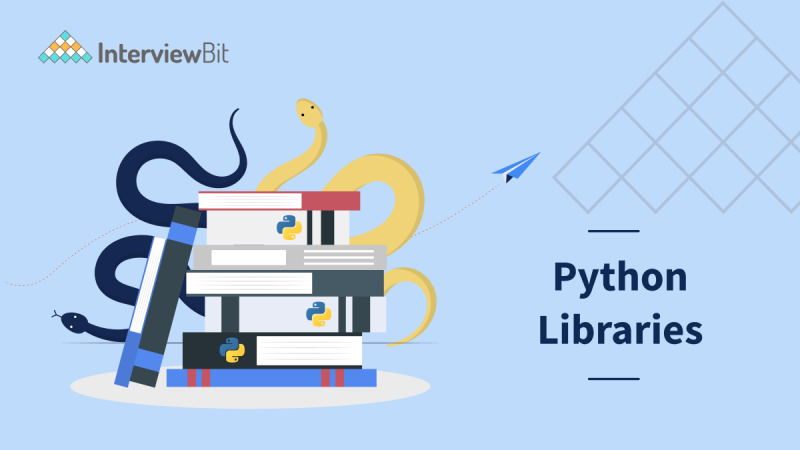- Introduction
- What is A Library?
- What Are Python Libraries?
- List of Top Libraries in Python
- Conclusion
- Frequently Asked Questions (FAQs)
- Q.1: What are Python libraries used for?
- Q.2: Are all Python libraries free?
- Q.3: How do libraries work in Python?
- Q.4: How do I list all libraries in Python?
- Additional Resources
Introduction
In today’s world, when technology plays an increasingly vital part in all aspects of our lives, it’s critical that we choose a programming language that can efficiently address real-world problems. Python is one such programming language. Python’s popularity has skyrocketed in recent years, thanks to its use in a wide range of industries such as software engineering, machine learning, and data science, among others. The multitude of libraries that Python has to offer is the reason for its popularity. A lot of budding talents of today are being attracted to Python as their primary choice of programming language because of this reason and therefore, through this article, we would like to impart knowledge to our readers about the most famous Python Libraries and their usage in today’s modern world.
What is A Library?
A library is a collection of utility methods, classes, and modules that your application code can use to perform specific tasks without writing the functionalities from scratch. Because libraries often have a narrow scope (for instance, Strings, Input / Output, and Sockets), their APIs (Application Programming Interfaces) are smaller and require fewer dependencies. It’s nothing more than a list of class definitions. Now the question which should arise in everyone’s mind is why do we require libraries? The explanation for this is simple: code reusability. Code Reusability means nothing but using code that has already been produced or written down by other people for our own purpose. For instance, some libraries have a function called findLastIndex(char) that returns the last index of a character in a string. We may immediately call the library’s findLastIndex(charToFind) function and supply the characters whose positions we need to find as a parameter. In the life of a programmer, libraries play the role of an angel as they prevent programmers from reinventing the wheel again and again and actually focus on the real problem.
What Are Python Libraries?
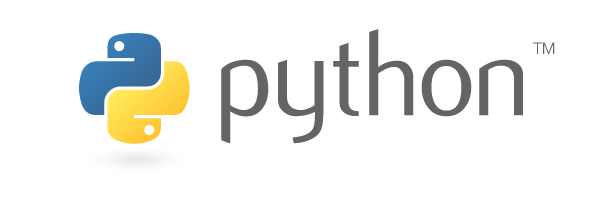
Let us begin with a quick overview of the Python programming language before diving right into the most popular Python libraries. It is a foregone conclusion that you have probably heard of ‘Python.’ Python, the brainchild of Guido Van Rossum and dating back to the 1980s, has proven to be a game-changer. It is one of the most extensively used coding languages today, and it is utilized for a wide range of applications. Python’s popularity can be attributed to a number of factors:
Confused about your next job?
- Python comes with a plethora of libraries.
- Python is a beginner’s programming language due to its ease and simplicity.
- Python wants their developers to be more productive in all aspects of development, deployment, and maintenance.
- Another reason for Python’s enormous popularity is its portability.
- When compared to C, Java, and C++, Python’s programming syntax is straightforward to learn and has a high level of abstraction.
As mentioned in the very first point above, the popularity of Python has a lot to do with its diverse and easy-to-use libraries. Python libraries are a collection of helpful functions that allow us to write code without having to start from scratch. With more than 137,000 libraries, Python can be used to create applications and models in a variety of fields, for instance, machine learning, data science, data visualization, image and data manipulation, and many more.
List of Top Libraries in Python
Now that we do understand a bit about what libraries are and what Python is, let us do a deep dive into some of the most commonly used libraries in Python:
1. Pandas
Pandas is a BSD (Berkeley Software Distribution) licensed open-source library. This popular library is widely used in the field of data science. They are primarily used for data analysis, manipulation, cleaning, etc. Pandas allow for simple data modeling and data analysis operations without the need to switch to another language such as R. Usually, Python libraries use the following types of data:
- Data in a dataset.
- Time series containing both ordered and unordered data.
- Rows and columns of matrix data are labelled.
- Unlabeled information
- Any other type of statistical information
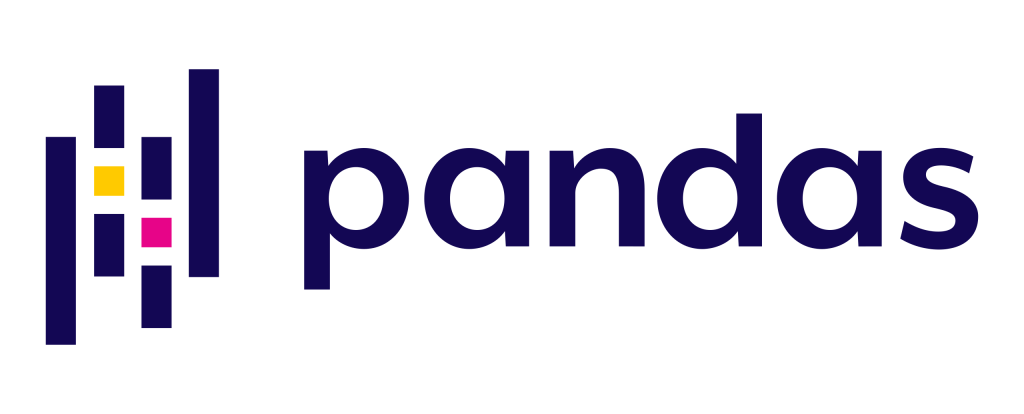
Pandas can do a wide range of tasks, including:
- The data frame can be sliced using Pandas.
- Data frame joining and merging can be done using Pandas.
- Columns from two data frames can be concatenated using Pandas.
- In a data frame, index values can be changed using Pandas.
- In a column, the headers can be changed using Pandas.
- Data conversion into various forms can also be done using Pandas and many more.
2. NumPy
NumPy is one of the most widely used open-source Python libraries, focusing on scientific computation. It features built-in mathematical functions for quick computation and supports big matrices and multidimensional data. “Numerical Python” is defined by the term “NumPy.” It can be used in linear algebra, as a multi-dimensional container for generic data, and as a random number generator, among other things. Some of the important functions in NumPy are arcsin(), arccos(), tan(), radians(), etc. NumPy Array is a Python object which defines an N-dimensional array with rows and columns. In Python, NumPy Array is preferred over lists because it takes up less memory and is faster and more convenient to use.
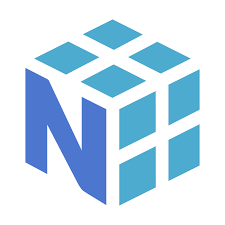
Features:
- Interactive: Numpy is a very interactive and user-friendly library.
- Mathematics: NumPy simplifies the implementation of difficult mathematical equations.
- Intuitive: It makes coding and understanding topics a breeze.
- A lot of Interaction: There is a lot of interaction in it because it is widely utilised, hence there is a lot of open source contribution.
The NumPy interface can be used to represent images, sound waves, and other binary raw streams as an N-dimensional array of real values for visualization. Numpy knowledge is required for full-stack developers to implement this library for machine learning.
3. Keras
Keras is a Python-based open-source neural network library that lets us experiment with deep neural networks quickly. With deep learning becoming more common, Keras emerges as a great option because, according to the creators, it is an API (Application Programming Interface) designed for humans, not machines. Keras has a higher adoption rate in the industry and research community than TensorFlow or Theano. It is recommended that you install the TensorFlow backend engine before installing Keras.

Features:
- It runs without a hitch on both the CPU (Central Processing Unit) and GPU (Graphics Processing Unit).
- Keras supports nearly all neural network models, including fully connected, convolutional, pooling, recurrent, embedding, and so forth. These models can also be merged to create more sophisticated models.
- Keras’ modular design makes it very expressive, adaptable and suited well to cutting-edge research.
- Keras is a Python-based framework, that makes it simple to debug and explore different models and projects.
Keras-powered features are already in use at various companies, for instance, Netflix, Uber, Yelp, Instacart, Zocdoc, Square, and a slew of other companies. It is particularly popular among firms that use deep learning to power their products. Keras includes a lot of implementations of standard neural network-building elements such as layers, objectives, activation functions, optimizers, and a slew of other tools for working with picture and text data. It also includes several pre-processed data sets and pre-trained models, such as MNIST, VGG, Inception, SqueezeNet, ResNet, etc.
4. TensorFlow
TensorFlow is a high-performance numerical calculation library that is open source. It is also employed in deep learning algorithms and machine learning algorithms. It was created by the Google Brain team researchers within the Google AI organization and is currently widely utilized by math, physics, and machine learning researchers for complicated mathematical computations. TensorFlow is designed to be fast, and it employs techniques such as XLA (XLA or Accelerated Linear Algebra is a domain-specific compiler for linear algebra that can accelerate TensorFlow models with potentially no source code changes.) to do speedy linear algebra computations.
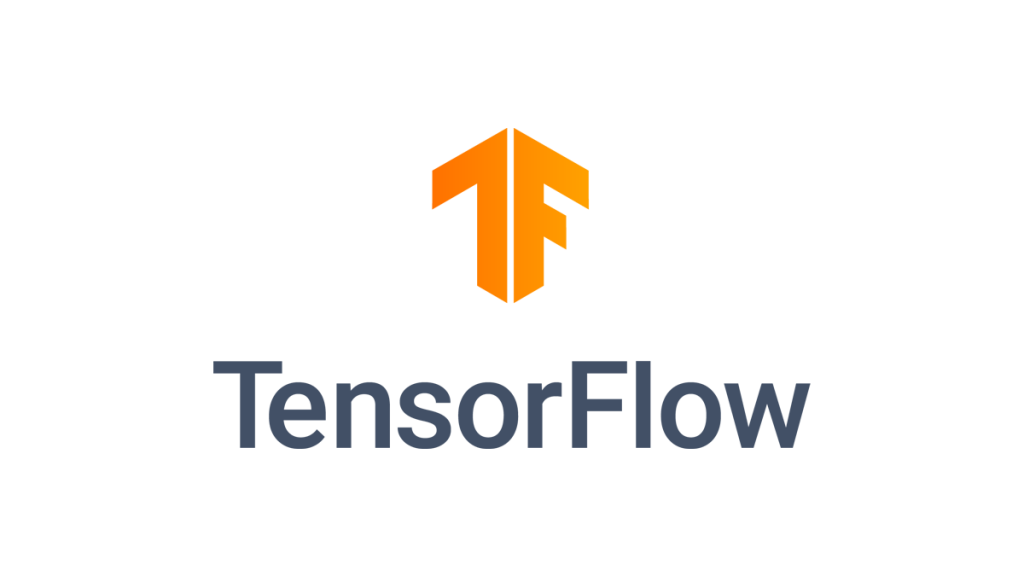
Features:
- Responsive Construct: We can easily visualize every part of the graph with TensorFlow, which is not possible with Numpy or SciKit.
- Adaptable: One of the most essential Tensorflow features is that it is flexible in its operation related to Machine Learning models, which means that it has modularity and allows you to make sections of it stand alone.
- It is Simple to Train Machine Learning Models in TensorFlow: Machine Learning models can be readily trained using TensorFlow on both the CPU and GPU for distributed computing.
- Parallel Neural Network Training: TensorFlow allows you to train many neural networks and GPUs at the same time.
- Open Source and a large community: Without a doubt, if it was developed by Google, there is already a significant team of software experts working on constant stability improvements. The nicest part about this machine learning library is that it is open-source, which means that anyone with internet access can use it.
TensorFlow is used regularly, but only inadvertently, through services like Google Voice Search and Google Photos. TensorFlow’s libraries are developed entirely in C and C++. It does, however, have a sophisticated Python front end. Your Python code will be compiled and run on the TensorFlow distributed execution engine, which is written in C and C++. TensorFlow has an almost infinite amount of applications, which is one of its most appealing features.
5. Scikit Learn
Scikit Learn is an open-source library for machine learning algorithms that runs on the Python environment. It can be used with both supervised and unsupervised learning algorithms. The library includes popular algorithms as well as the NumPy, Matplotlib, and SciPy packages. Scikit learns most well-known use is for music suggestions in Spotify. Let us now deep dive into some of the key features of Scikit Learn:
- Cross-Validation: There are several methods for checking the accuracy of supervised models on unseen data with Scikit Learn for example the train_test_split method, cross_val_score, etc.
- Unsupervised learning techniques: There is a wide range of unsupervised learning algorithms available, ranging from clustering, factor analysis, principal component analysis, and unsupervised neural networks.
- Feature extraction: Extracting features from photos and text is a useful tool (e.g. Bag of words)
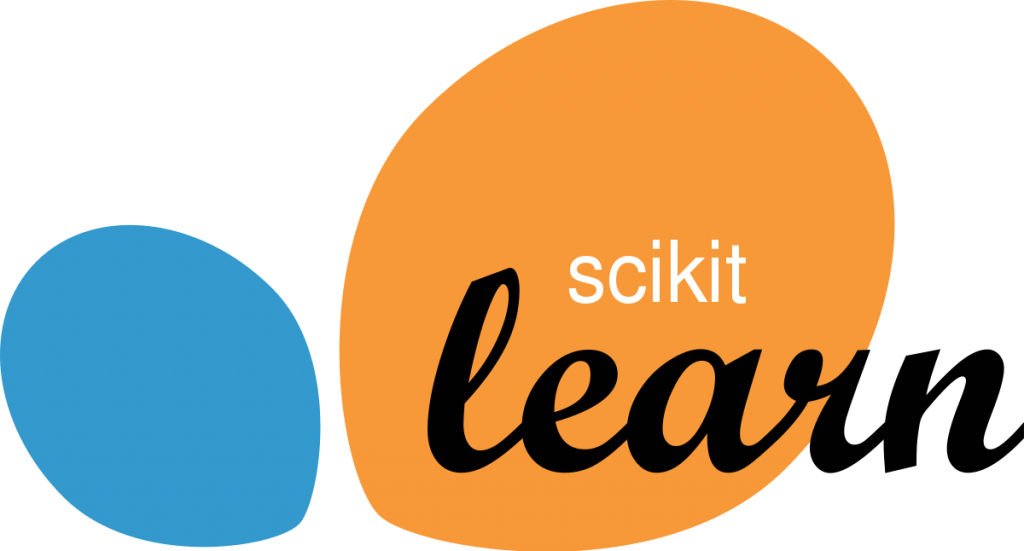
Scikit Learn includes a large number of algorithms and can be used for performing common machine learning and data mining tasks such as dimensionality reduction, classification, regression, clustering, and model selection.
6. Eli5
The outcomes of machine learning model predictions are frequently inaccurate, and the Eli5 Python machine learning library aids in addressing this difficulty of inaccurate predictions. It is a combination of visualization and debugging all machine learning models, as well as tracking all of an algorithm’s working processes. Some of the libraries supported by Eli5 include XGBoost, lightning, scikit-learn, and sklearn crfsuite.

Let us now talk about some of Eli5’s applications:
- ELI5 is a python package that is used to inspect Machine Learning classifiers and explain their predictions. It is popularly used to debug algorithms such as sklearn regressors and classifiers, XGBoost, CatBoost, Keras, etc.
- Where there are dependencies with other Python packages, Eli5 is essential.
- Eli5 is also used in a variety of industries where legacy software and innovative approaches are being implemented.
7. SciPy
Scipy is a free, open-source Python library used for scientific computing, data processing, and high-performance computing. The library contains a huge number of user-friendly routines for quick computation. The package is based on the NumPy extension, which allows for data processing and visualization as well as high-level commands. Scipy is used for mathematical computations alongside NumPy. NumPy enables the sorting and indexing of array data, while SciPy stores the numerical code. Cluster, constants, fftpack, integrate, interpolate, io, linalg, ndimage, odr, optimize, signal, sparse, spatial, special, and stats are only a few of the many sub packages available in SciPy. “from scipy import subpackage-name” can be used to import them from SciPy. NumPy, SciPy library, Matplotlib, IPython, Sympy, and Pandas are, however, the essential packages of SciPy.

Features:
- SciPy’s key characteristic is that it was written in NumPy, and its array makes extensive use of NumPy.
- SciPy uses its specialised submodules to provide all of the efficient numerical algorithms such as optimization, numerical integration, and many others.
- All functions in SciPy’s submodules are extensively documented. SciPy’s primary data structure is NumPy arrays, and it includes modules for a variety of popular scientific programming applications. SciPy handles tasks like linear algebra, integration (calculus), solving ordinary differential equations, and signal processing with ease.
8. PyTorch
PyTorch is a Python library introduced first by Facebook in the year 2017 that combines the following two high-level capabilities:
- Tensor computation with substantial GPU acceleration (similar to NumPy)
- Platforms based on deep neural networks offering flexibility and speed.

Features:
- Python and its libraries are supported by PyTorch.
- Facebook’s Deep Learning requirements necessitated the use of this technology.
- It provides an easy to use API that improves usability and comprehension.
- Graphs can be set up dynamically and computed dynamically at any point during code execution in PyTorch.
- In PyTorch, coding is simple and processing is quick.
- Because CUDA (CUDA is a parallel computing platform and application programming interface that allows software to use certain types of graphics processing unit for general purpose processing – an approach called general-purpose computing on GPUs) is supported, it can be run on GPU machines.
PyTorch is mostly used for natural language processing applications. It was developed primarily by Facebook’s artificial-intelligence research lab, and Uber’s “Pyro” probabilistic programming software is based on it. PyTorch outperforms TensorFlow in a variety of areas, and it has recently gained a lot of attention due to its features.
9. LightGBM
Gradient Boosting is a prominent machine learning package that assists developers in developing new algorithms by redefining simple models, such as decision trees. As a result, there exist dedicated libraries that may be used to implement this Gradient Boosting method quickly and efficiently. LightGBM, XGBoost, and CatBoost are the libraries in question. All of these libraries are rivals that help solve the same problem and may be used in nearly the same way.

Features:
- High production efficiency is ensured by very quick computation.
- It is user-friendly because it is intuitive.
- Many other deep learning libraries take longer to train than this one.
- When using NaN values and other canonical values, there will be no errors.
These libraries offer highly scalable, efficient, and quick gradient boosting implementations, making them popular among machine learning engineers.
10. Theano
Theano, like other mathematical operations libraries, allows users to define, optimize, and evaluate mathematical expressions. For efficient mathematical processing, it uses massive multi-dimensional arrays. When dealing with large amounts of data, standard C-based codes become slower. Theano, on the other hand, makes it possible to quickly implement code because of its rich library. Unstable expressions can be recognized and computed, making the library more useful over NumPy.

Features:
- NumPy integration: Theano can use NumPy arrays entirely in Theano compiled functions.
- Use of a transparent GPU: It can be used to perform data-intensive operations significantly faster than with a CPU.
- Efficient symbolic differentiation: Theano does derivatives for functions with one or more inputs using efficient symbolic differentiation.
- Optimizations for speed and stability: For problems like getting the correct solution for log(1+x) even when x is very small, Theano works well. This is just one of the many pieces of evidence of Theano’s stability.
- C code generation that is dynamic: Theano can evaluate expressions fast resulting in a significant increase in efficiency.
- Extensive unit-testing and self-verification: Theano can help detect and diagnose numerous types of problems and ambiguities in the model with extensive unit testing and self-verification.
Theano expressions use a symbolic syntax, which might be confusing for newcomers who are used to traditional program development. In particular, expressions are specified in an abstract sense, compiled, and then used to do calculations. It is designed to handle the types of processing required by Deep Learning’s huge neural network algorithms. It is an industry standard for Deep Learning research and development and was one of the first libraries of its sort. As of today, Theano is the backbone of a slew of neural network projects, and its popularity is only growing.
Conclusion
The easy-to-use Python programming language has found widespread use in a variety of real-world applications. Because it is a high-level, dynamically typed, interpreted language, it is rapidly expanding in the areas of error debugging. Python is increasingly being used in global applications such as YouTube, DropBox, and others. Furthermore, with the availability of Python libraries, users can perform a variety of tasks without having to write their own code. Therefore, it becomes extremely important for any budding talent of today to learn about Python and its libraries. The application of Python in a variety of fields like Data Science, Machine Learning, Software Engineering, etc. definitely makes it the language for the future.
Frequently Asked Questions (FAQs)
Q.1: What are Python libraries used for?
Ans: Python libraries are used to create applications and models in a variety of fields, for instance, machine learning, data science, data visualization, image and data manipulation, and many more.
Q.2: Are all Python libraries free?
Ans: Yes, most of the Python libraries are free. Python has been developed under an OSI-approved open-source license. This makes it freely usable and distributable, even for commercial use.
Q.3: How do libraries work in Python?
Ans: We can simply import Python Libraries in our code and then use the functions, etc. which the libraries have to offer.
Q.4: How do I list all libraries in Python?
Ans: There are two ways in which we can list all the libraries in Python:
- Using the help function: To acquire a list of installed modules in Python, we can use the help function. We can type the following command into the Python prompt and it will display a list of all the modules that have been installed on the system..
help("modules")We do not need to install any additional packages to list it; nevertheless, we must manually search or filter the list for the appropriate module.
- Using python-pip:
sudo apt-get install python-pip
pip freeze Using this method, even though we need to install additional packages for using this, we easily search or filter the result with grep command as shown below:
pip freeze | grep feed

